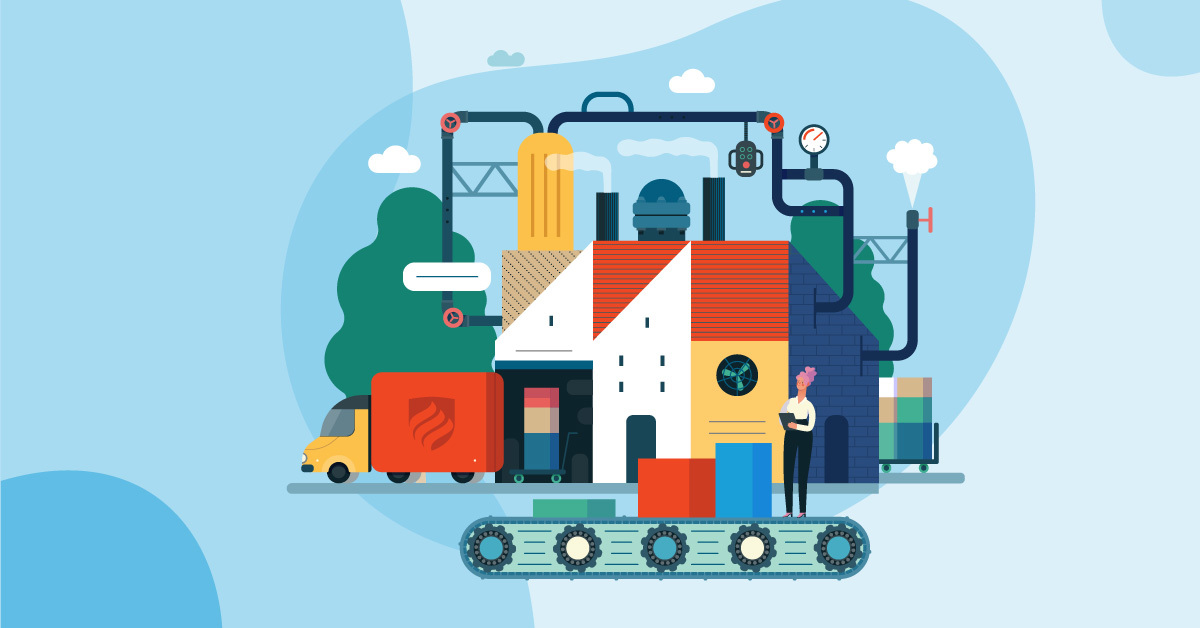Manufacturing a Product in a Supply Chain
GRADUATE STUDIES | 4 MIN READ

Supply chains can be employed to connect data or ideas, link people via communication systems, or focus on the manufacture of a tangible product.
But the end goal of any type of supply chain is a satisfied customer.
In product manufacturing, the supply chain facilitates the transfer and transformation of raw materials into finished products. From there, the manufacturer transports and distributes the products to a retailer or directly to a consumer.
Customer satisfaction in product manufacturing rests on creating a high-quality product at a reasonable cost and in the requested time frame.
Easier said than done, of course, but all successful supply chains develop and constantly revisit their parameters for making sound decisions on costs, price, quality and speed in every step of the manufacturing process—from materials and labor to delivery and storage.
It starts with the cost of raw materials. But quality and sourcing matter, too. Materials have to arrive on time and in the desired quantities to the facility that produces the product. A breakdown in just one part of the supply chain can bring everything to a grinding halt.
Manufacturing Essentials: Suppliers and Goods
In order to deliver a product to market on time and on budget, you must collaborate with suppliers. Manufacturing a product in the global marketplace almost always means that raw materials will have to be moved from one location to another—and that the various components of an end product will be procured from different suppliers.
If that’s the case, you must consider the size and weight of the items being shipped and the distance between locations. Then you have to compare shipping times and rates and negotiate for the best deal.
Fortunately, technological advances make it simple and fast to map out the quickest routes for drivers, choose the most fuel-efficient delivery vehicles, and maintain precise purchase and order-processing systems. All of which save time and money.
Manufacturing Essentials: Labor and Equipment
Raw materials are integral to product manufacturing, obviously, but they are far from the only component. Without labor inputs, you just have a stack of materials—fabric that needs to be sewn into clothing, wood that’s waiting to be built into furniture, and metal that is useless until it’s engineered into machinery.
Simply put, you need good workers.
But while people drive labor, the manufacturing equipment they use can’t be ignored, either. A supply chain management team works closely with designers and engineers so that the workers building the products know what parts and assemblies are available to them and are kept up to date on usage.
The team has to decide when and how to make a capital investment in equipment so that workers can be safe, effective and efficient in their jobs. In some cases, that could mean owning the entire distribution system. In others, all services may be contracted out. Your product manufacturing likely will fall somewhere in the middle.
Finally, product manufacturing—like every other process in the supply chain—involves plenty of coordination, collaboration and decision-making. A robust organization constantly motivates itself to improve speed, raise quality and lower costs as it turns raw materials into finished goods ready for use.
Learn About the Process of Manufacturing a Product
When you enroll in the Supply Chain Management master’s program at Elmhurst University, you will join a cohort that meets on campus one evening a week with faculty members who are experts in their field. You’ll increase your aptitude for today’s—and tomorrow’s—business environment by taking a deep dive into manufacturing, sourcing and purchasing, logistics and more.
In addition, you will make connections in the field and gain hands-on experience—plus a built-in network of Elmhurst alumni and professors who can connect you to employers in the Chicago area and across the United States.
Find out more by requesting information today!





















